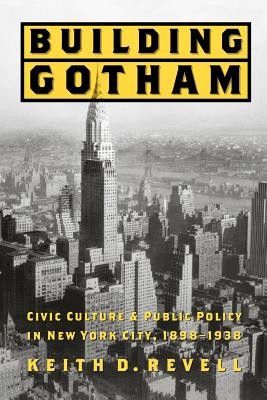
- We will send in 10–14 business days.
- Author: Keith D Revell
- Publisher: Johns Hopkins University Press
- ISBN-10: 0801882060
- ISBN-13: 9780801882067
- Format: 15 x 23.3 x 2 cm, softcover
- Language: English
- SAVE -10% with code: EXTRA
Reviews
Description
Winner of the Best Book in North American Urban History Prize from the Urban History AssociationWinner of the Abel Wolman Award from the American Public Works Association
In 1898, the New York state legislature created Greater New York, a metropolis of three and a half million people, the second largest city in the world, and arguably the most diverse and complex urban environment in history. In this far-ranging study, Keith D. Revell shows how experts in engineering, law, architecture, public health, public finance, and planning learned to cope with the daunting challenges of collective living on this new scale. Engineers applied new technologies to build railroad tunnels under the Hudson River and construct aqueducts to quench the thirst of a city on the verge of water famine. Sanitarians attempted to clean up a harbor choked by millions of gallons of raw sewage. Economists experimented with new approaches to financing urban infrastructure. Architects and planners wrestled with the problems of skyscraper regulation and regional growth. These issues of city-building and institutional change involved more than the familiar push and pull of interest groups or battles between bosses, reformers, immigrants, and natives. Revell details the ways that technical values--distinctive civic culture of expertise--helped reshape ideas of community, generate new centers of public authority, and change the physical landscape of New York City.
Building Gotham thus demonstrates how a group of ambitious professionals overcame the limits of traditional means of decision-making and developed the city-building practices that enabled New York to become America's first mega-city.
EXTRA 10 % discount with code: EXTRA
The promotion ends in 17d.03:18:14
The discount code is valid when purchasing from 10 €. Discounts do not stack.
- Author: Keith D Revell
- Publisher: Johns Hopkins University Press
- ISBN-10: 0801882060
- ISBN-13: 9780801882067
- Format: 15 x 23.3 x 2 cm, softcover
- Language: English English
Winner of the Best Book in North American Urban History Prize from the Urban History AssociationWinner of the Abel Wolman Award from the American Public Works Association
In 1898, the New York state legislature created Greater New York, a metropolis of three and a half million people, the second largest city in the world, and arguably the most diverse and complex urban environment in history. In this far-ranging study, Keith D. Revell shows how experts in engineering, law, architecture, public health, public finance, and planning learned to cope with the daunting challenges of collective living on this new scale. Engineers applied new technologies to build railroad tunnels under the Hudson River and construct aqueducts to quench the thirst of a city on the verge of water famine. Sanitarians attempted to clean up a harbor choked by millions of gallons of raw sewage. Economists experimented with new approaches to financing urban infrastructure. Architects and planners wrestled with the problems of skyscraper regulation and regional growth. These issues of city-building and institutional change involved more than the familiar push and pull of interest groups or battles between bosses, reformers, immigrants, and natives. Revell details the ways that technical values--distinctive civic culture of expertise--helped reshape ideas of community, generate new centers of public authority, and change the physical landscape of New York City.
Building Gotham thus demonstrates how a group of ambitious professionals overcame the limits of traditional means of decision-making and developed the city-building practices that enabled New York to become America's first mega-city.


Reviews